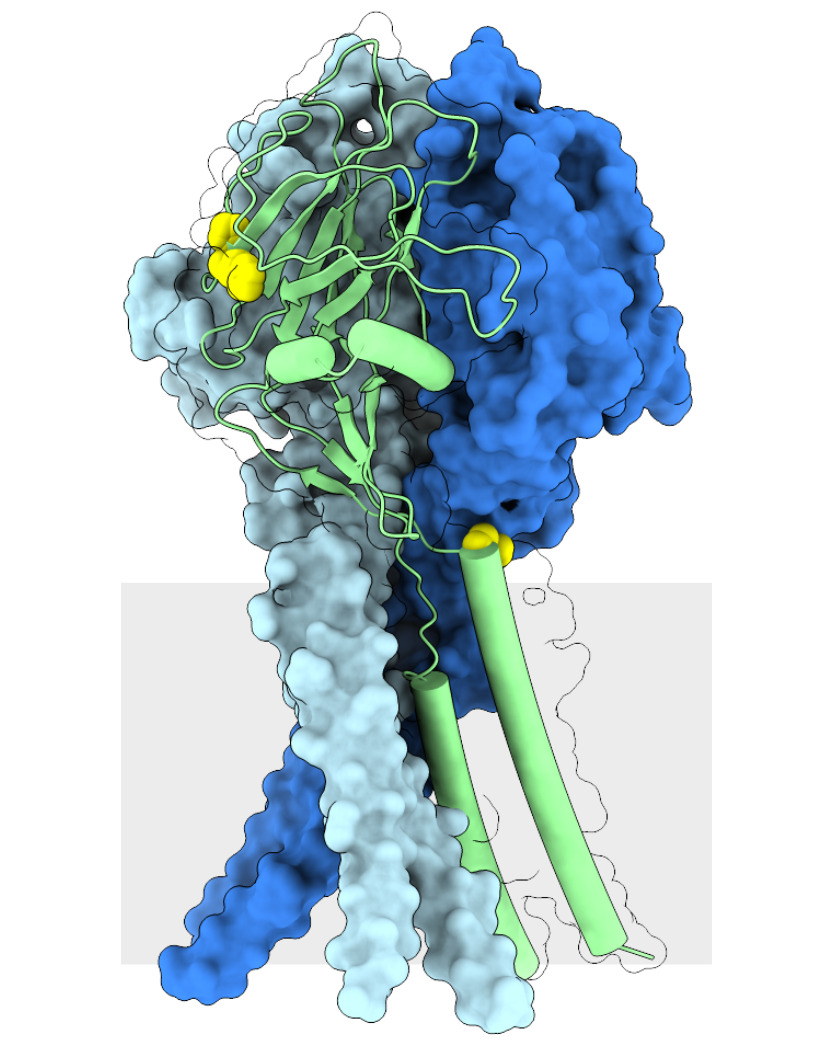located in the Department of Biochemistry & Molecular Biology at the Thomas Jefferson University.
The Ruan lab is located in the Department of Biochemistry & Molecular Biology at Thomas Jefferson University and Sidney Kimmel Medical College. Our lab studies the molecular mechanisms of membrane receptors and channels that facilitate cellular signal transduction using a combination of computational, structural, and biochemical techniques. The overarching goal of the lab is to understand the allosteric communication that enables proteins to react to input signals precisely and how pharmacological compounds impact this process. Past breakthroughs from Dr. Ruan have elucidated the activation mechanism of epidermal growth factor receptor kinases (EGFR), the gating and pharmacological principals of the pannexin 1 (PANX1) channel, the proton-activated chloride (PAC) channel, and the transient receptor potential melastatin (TRPM) 5 channel.
Proteins play an integral role in virtually every biological process, and their function is directly influenced by their unique structure. Determining the structure of proteins is crucial for understanding protein function at both normal and disease conditions. Cryo-electron microscopy (cryo-EM) is a cutting-edge alternative to X-ray crystallography, and obviates the need for crystal formation. Cryo-EM has made significant strides in recent times with improvements in electron detection and image processing, resulting in resolutions that are comparable to X-ray crystallography. Our objective is to leverage cryo-EM to ascertain high-resolution structures of significant membrane protein complexes that participate in cellular signaling, including cellular receptors and ion channels. Additionally, we combine structural methods with functional investigations to elucidate the relationship between structure and function of these membrane proteins.

Receptor tyrosine kinases (RTKs) are a subclass of membrane-spanning tyrosine kinases that control a wide range of complex biological functions, including cell growth, motility, differentiation, and metabolism. The aim of this project is to understand how ligand binding to the extracellular domain of RTKs conveys extracellular cues to intracellular effectors. As aberrant activation of RTKs is implicated in multiple human cancers, a detailed understanding of the kinase activation mechanism will provide important insights into targeting these proteins therapeutically.

The activation of proton-activated chloride channel (PAC) is one of the key factors that determines the severity of brain damage after ischemic stroke. This project aims to elucidate the working mechanism of how PAC senses environmental pH and its pharmacological properties. This knowledge will serve as a foundation to develop novel treatment strategies for ischemic stroke and other diseases that are associated with tissue acidosis.